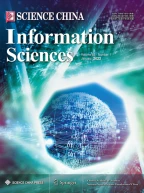Abstract
In this article, both the basic principles and the experimental methods of identity recognition technology based on heart sounds are addressed. First, the characteristics of heart sounds and the feasibility of heart sounds as a biometric were analyzed. A synthetic model of heart sounds was then developed based on a family of wavelets; Finally, the characteristic parameters of heart sounds were extracted by using the heart sounds linear band frequency cepstra (HS-LBFC) with a specified configuration, and the similarity distance was adopted for heart sound identification. To highlight the difference in two heart sound signals between the time and frequency domains, a construction method of the heart sound wavelet, a calculation method of the parameters of a synthetic model, selection of the characteristic parameters of heart sounds and the corresponding data processing technology were examined. The experimental results showed that the proposed method exhibited excellent performance and practicability.
Similar content being viewed by others
References
Besson P, Kunt M. Hypothesis testing for evaluating a multimodal pattern recognition framework applied to speaker detection. Neuroeng Rehabil, 2008, 5: 11–19
Shengli W, Mclean S. Performance prediction of data fusion for information retrieval. Inform Process Manag, 2006, 42: 899–915
Jain A K, Ross A, Prabhakar S. An introduction to biometri crecognition. IEEE Trans Circ Syst Vid, 2004, 14: 4–20
Biel L, Pettersson O, Philipson L, et al. EEG analysis: a new approach in human identification. IEEE Trans Instrum Meas, 2001, 50: 808–812
Asir B E, Khadra L, Abasi A H. Time-frequency analysis of heart sounds. Digit Signal Process Appl, 1996, 26: 287–314
Burhan E, Yetltin T. The analysis of heart sounds based on linear and high order statistical methods. IEEE-EMBS, 2001, 13: 411–430
Cheng X F, Ma Y. Applications of independent sub-band functions and wavelet analysis in single-channel noisy signal BSS: model and crucial technique (in Chinese). Acta Electron Sin, 2009, 37: 1522–1528
Kay M. Investigating the effect of vasodilator durgs on the turbulent sound caused by femoral artery stenosis using short-time fourier and wavelet transform methods. IEEE Trans Bio Med Eng, 1994, 41: 921–930
Maglogiannis I, Loukis E, Zafiropoulos E, et al. Support vectors machine-based identification of heart valve diseases using heart sounds. Comput Meth Program Biomed, 2009, 95: 47–61
Lee E, Michaels A D, Selvester R H, et al. Frequency of diastolic third and fourth heart sounds with myocardial ischemia induced during percutaneous coronary intervention. J Electrocardiol, 2009, 42: 39–45
Rabiner L, Juang B H. Fundamentals of Speech Recognition. Englewood Cliffs: Prentice-Hall International Inc., 1993. 17–46
Gao X P, Zhou S W. A study of orthogonal, balanced and symmetric multi-wavelets on the interval. Sci China Ser F-Inf Sci, 2005, 48: 761–781
Joseph P, Campbell. Speaker recognition: a tutorial. P IEEE, 1997, 85: 1437–1462
Cheng X F, Ma Y, Zhang S B. Three-step identity recognition technology using heart sound based on information fusion. Chinese J Sci Instrum (in Chinese), 2010. 8: 1712–1720
Author information
Authors and Affiliations
Corresponding author
Rights and permissions
About this article
Cite this article
Cheng, X., Ma, Y., Liu, C. et al. Research on heart sound identification technology. Sci. China Inf. Sci. 55, 281–292 (2012). https://doi.org/10.1007/s11432-011-4456-8
Received:
Accepted:
Published:
Issue Date:
DOI: https://doi.org/10.1007/s11432-011-4456-8
